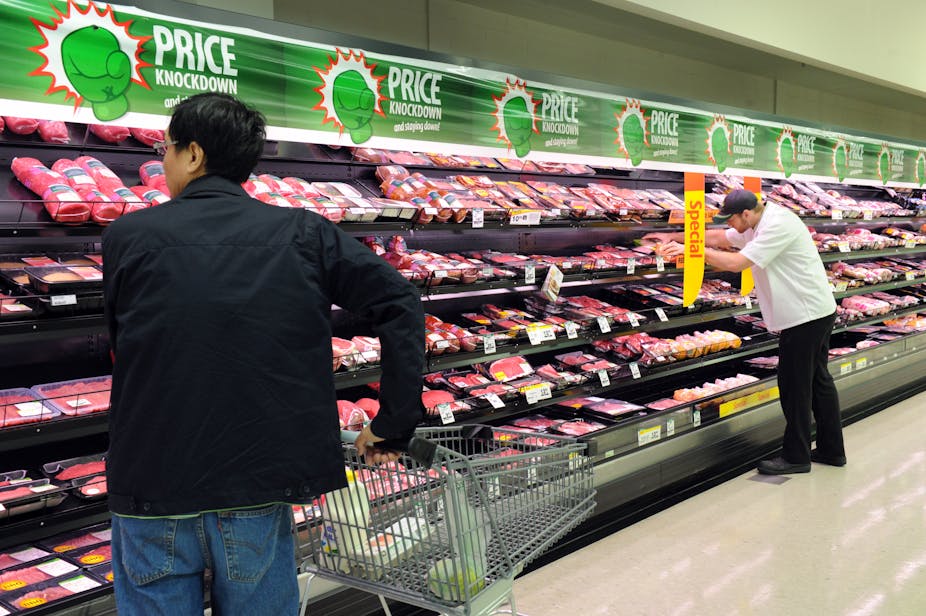The drastic social and demographic changes of the past few decades have radically changed traditional gender roles within the family structure in Australia.
In the process, they have also changed the way we shop.
Men now engage in grocery shopping much more frequently than in the past, and consequently, supermarket chains are looking for ways to capitalise on the evenly split gender divide in their aisles.
Overseas retailers have found significant sales success in demarcating “male zones”, where men can browse cosmetic products free from scrutiny and liberated from the so-called “fear of the feminine”.
But will Australian retailers copy this strategy? If they want to capture the potential of their growing male consumer base, then perhaps they will.
Changing roles
Since the early 1970s, the proportion of men responsible for their household’s grocery shopping has increased from 25% to almost 50%.
A survey of 2000 Australian banking customers in 2011 found that over 47% of men claim to be responsible for family grocery shopping.
This shift presents an opportunity to examine the behaviours and beliefs of this emerging consumer group – and what they mean for supermarkets.
Research has identified five core social drivers that have led to the merging family gender roles in Australia – the key driver behind more men visiting supermarkets each week.
The most widely recognised reasons for this shift are the increase in employment participation rates among women, access to greater levels of post secondary education and the impact of feminist ideology on contemporary males.
A broadening middle class Australia has also been considered a factor in this shift.
The key question for retailers is: do all men behave in the same in the supermarket?
Countless studies of consumer behaviour have been carried out over the the past few decades, but there has been little investigation of how men shop in supermarkets.
To address this imbalance, my research surveyed the behaviour of 140 male grocery shoppers.
The most dominant type of male consumer in this group was the budget-conscious shopper, which closely resembles price-motivated consumers identified in other studies.
But the study also identified a shopper type labelled “equitable”. This group included men who did not consider grocery shopping a gendered activity, unlike the controlled or egocentric shopper, who still considered it to be the responsibility of the female spouse.
Such a group has not been present in other studies on consumer behaviour.
An aisle of their own?
With men now making up almost 50% of all grocery shoppers, should supermarkets consider layout changes to accommodate this emergent shopper?
While the concept of a “male zone” might seem revolutionary for most major supermarkets, international retailers who have adopted a “store within a store” model have seen increases in sales.
The US supermarket chain H-E-B Grocery saw sales in health and beauty products increase 11% in 2010, when a male zone was established.
Australian supermarkets should consider whether men would browse more if health and beauty aisles were divided by gender rather than product.
Research has shown that there is a group of male shoppers who have a “fear of the feminine”.
This fear, discomfort or embarrassment appears heightened when purchasing products of a personal nature, such a hair colorants, condoms or moisturisers, in high traffic areas, frequented by the opposite gender.
This is based on the premise that this cohort of men are apprehensive of women’s products and are therefore less likely to spend time perusing their own personal needs.
It is suggested that supermarkets will soon reach parity, with equal proportions of men and women taking responsibility for weekly food shopping.
This will force brand managers and retail executives to reconsider ranging, layouts, space management and operations.
The male zone could soon be coming to a store near you.

